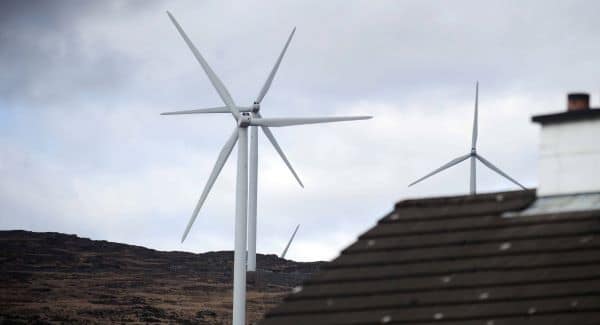SOLICITOR’S GUIDE TO WINDFARM AGREEMENTS

A guide to windfarm agreements for landowners, farmers and potential investors in Ireland. Whilst a developer might look for an option that includes all of your property, it is absolutely within your rights to not include these lands if you do not wish to do so. This exclusion of land can be covered in the Windfarm agreement.
A Comprehensive Solicitor’s Guide to Irish Windfarm Agreements
- Do not provide the company with any more land than necessary. A good rule of thumb is to provide two hectares of land for each turbine.
- Be diligent when identifying exactly what land will be included in the wind farm agreement. Any agreement should include a map that clearly identifies boundaries. It may be a good idea to employ the services of a professional engineer to create and oversee this map and avoid any future disputes that may occur.
- Plan for the future. Consider any future plans you might have for the property or land in question. Pay particular attention to any succession plans for children.
- Make a plan that takes into consideration the daily running of your farm. Do you need use of certain access routes to maintain your livelihood? Access routes should form part of any agreement to avoid disputes and disruptions.
Renewable Energy Solicitors Cork and Midleton
- The wind farm agreement can greatly change the layout of your current farm, so it is important to plan ahead and take into consideration access routes, gates and fences.
- Pay careful attention to the agreement and note any clauses that put restrictions on neighbouring/adjoining land. If you have future plans for any adjoining land, this should be included in the agreement to ensure the wind farm operators do not object to your activities in the future.
- Put in place a clause or section that allows you to have full use of any infrastructure created on the land by the development company.
- Proof of the relevant insurance should be provided by the windfarm developer. These documents should be provided to you and your representation on a yearly basis to ensure full compliance.
- Depending on the nature of the development, the following types of insurance may be required: marine, future profit loss, uploading of turbines, transit, public liability, rebuild cover.
- Once the installation has been completed and commissioning signed off, the following types of insurance should be provided by the development company: operational damage, public liability, and material damage. The developer should also indemnify you from any claims that may arise on the land.
- Always seek legal advice prior to signing any agreement. Speak to your Teagasc representative to clarify compliance with any Department of Agriculture schemes you may be entitled to.
- Should the Department of Agriculture refuse any payments or seek payments due to non-compliance, this should be indemnified by the development company. These payments may include but are not limited to forestry and farm payments.
- Speak with a financial expert before signing any agreement. You want to avoid unexpected costs into the future.
- Generally speaking, windfarm agreements are accompanied by a confidentiality agreement, which means the landowners can not discuss the amounts of money involved. This means it can be difficult to determine what payment you should receive. Speak with a legal advisor who has experience in this area and they will talk you through this process.
- It is important that the payment agreement is based on megawatt of capacity installed rather than any exports. This will assist with calculating the amount of rent you will receive on an annual basis. This is a very important step in the rental agreement.
- Speak with your legal rep to ensure you are also receiving a percentage based on the proceeds from operation and include this in the agreement.
See walshandpartners.ie/blog for more!
Go to www.windfarms.ie for advice when entering into a Windfarm agreement
Share on facebook
Facebook
Share on twitter
Twitter
Share on linkedin
LinkedIn
Thank you for connecting with us. We will respond to you shortly.
1
1
https://walshandpartners.ie/wp-content/plugins/nex-forms-express-wp-form-builder
false
https://walshandpartners.ie/wp-admin/admin-ajax.php
https://walshandpartners.ie/renewable-energy-solicitor-and-windfarm-solicitor/windfarm-solicitor-ireland/solicitors-guide-to-windfarm-agreements
yes
1


